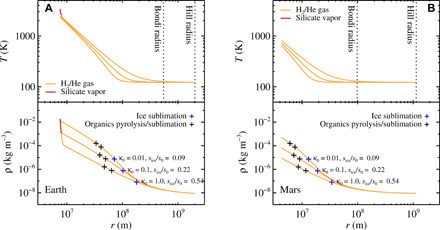Fig. 6. Temperature and density structure of the gaseous envelopes of Earth and Mars.

(A) Envelope structure of our Earth analog and (B) our Mars analog immediately before the dissipation of the protoplanetary disc at t = 5 Ma. The top panels show the gas temperature, and the bottom panels the gas density. Three different opacity levels are considered: κ0 = 0.01, 0.1, and 1.0 m2kg−1. The temperature of Earth’s envelope directly over the magma ocean core reaches 2000 to 3000 K. The saturated vapor pressure of silicates (assumed here to be Forsterite) dominates over the ambient pressure only in a tiny region above the surface that reaches temperatures above approximately 2600 K. We mark the relative entropy level at the water ice line. For the high-opacity case, the relative entropy approaches 50% of the disc entropy; flows from the protoplanetary disc easily reach this entropy level and cleanse the isothermal region of water vapor and ice particles. Mars remains colder than 1000 K throughout the envelope and avoids melting, but the water ice line lies at a similar entropy level to Earth. The envelopes of both Earth and Mars reach temperatures in the range 325 to 425 K slightly below the water ice lines; here, organic molecules undergo pyrolysis and sublimation to form volatile gas species (CH4, CO, and CO2). These species cannot recondense and will freely diffuse back to the protoplanetary disc.
